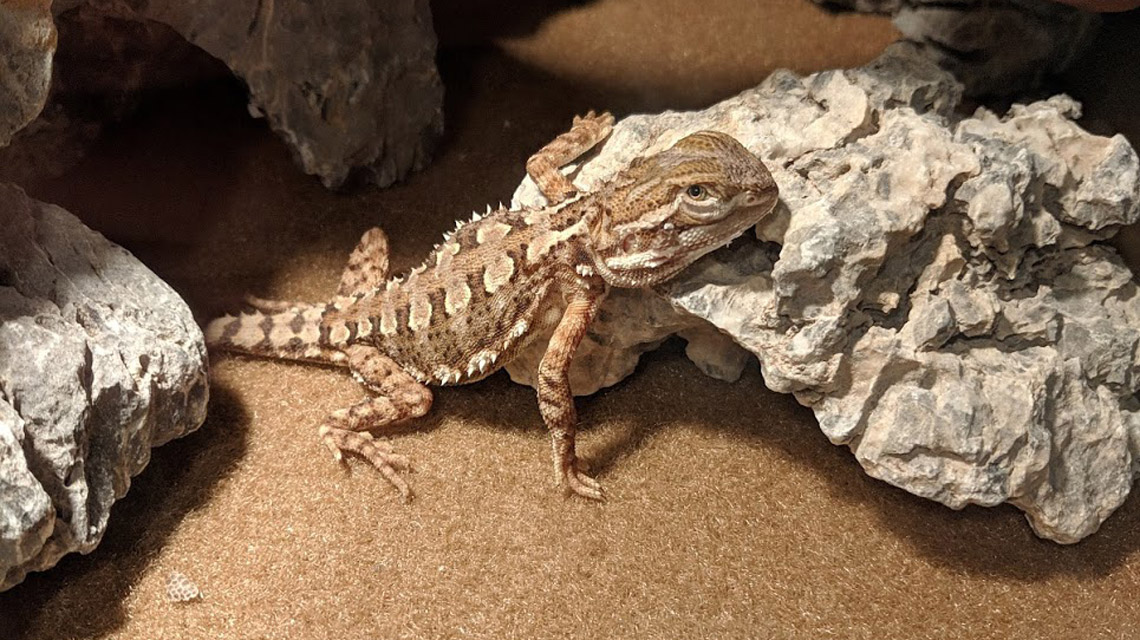Dragons, like all reptiles, shed their skin so that they can continue to grow. A new layer of skin grows underneath their old skin, and then they shed their old one. During this time, they can become moody. Imagine having scabs all over your body! That is what your dragon is experiencing.
Biology 101: “Ecdysis” - Reptiles shed their outer skin.
It is a common response for a dragon to stop eating when they are stressed or experiencing change, so it is not shocking that they stop eating during the shed. Since we are referring to the shed as a scab, do not remove it before it is ready. Shedding is such a natural process for them that they know when to rub and scrape off the dead skin. Pulling the skin off before it is ready can injure your dragon and could cause bleeding and infections. It will come off when it is ready.
Timeline?
The shed may take up to two weeks. One part of the body may shed, then there may be a few days without any shedding, then another part will shed. The shed will come off in patches. There is no rhyme or reason to where the shed starts and what order it goes in. My dragon may shed his tail first, but your dragon may shed his body first. Babies will shed about every 4-6 weeks but this can vary. After a dragon reaches a year, they will start shedding about once a year.
How can you help?
Your dragon may not want to be held or want to eat, but you should continue to offer food. Also, respect your dragon during this time. If they don't want to be held, then handle them as little as possible. You can also add, if not already there, a rock with rounded but slightly rough edges for your dragon to rub against. There are products out there called “shed-ease,” but there is no scientific evidence that these help. If you think your dragon is having trouble shedding, you can bathe them once a day. Get a bowl, or fill your sink with lukewarm water, and bathe your dragon. If you think the shed is stuck, you can get a soft bristle toothbrush and gently brush them. Do not use chemicals to help, as I mentioned above, this process is natural for them; they do it in the wild all of the time.
Do they actually eat the shed?
Dragons do often eat their shed skin; it is a sign that your dragon is healthy. They do this for a couple reasons. First, growing a new layer of skin is a lot of work. They can help replenish the minerals they lost by eating it. Second, they eat the shed to hide from others. In the wild, shed skin brings attention to the area by indicating “a lizard lives here.” They also like to keep their homes clean. We would not want to sleep with a bunch of scabs around, so why would your dragon?
What are the signs if your dragon is about to shed?
You may see your dragon puff out their eyes. When I first saw this, I thought something was wrong with my dragon! It can be scary to new dragon owners. This is just their way of stretching their eyelids and getting ready to shed. It can occur up to a week before they start shedding. You may also notice your dragon’s color darken or become dull. As mentioned above, they can/will get moody. I call this time “Dragon PMSing.” They will stop eating, become jumpy, not want to be held and become aggressive. This aggression can be mild, such as jumping away and pushing you away, or harsh like hissing, puffing out their beard and sometimes biting.
Shedding is natural, but there can be complications. If there is skin left on the toes or tail tip, a lack of humidity may be the problem. You can change this by adding a small bowl of water close to the light or by misting your dragons periodically.
How is this shedding different from snakes?
Growing up, I had three snakes and would love when they shed, but I felt out of my element when it came to my dragon shedding. Snakes shed in one piece and shed their outer eyeballs. Lizards, on the other hand, shed in patches and do not shed the eyeballs. Snakes also get moody and do not want to be handled, which is actually similar to Dragons.

